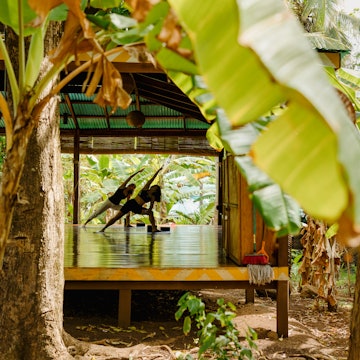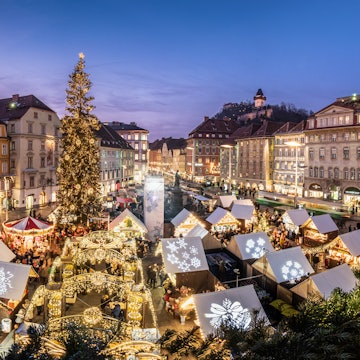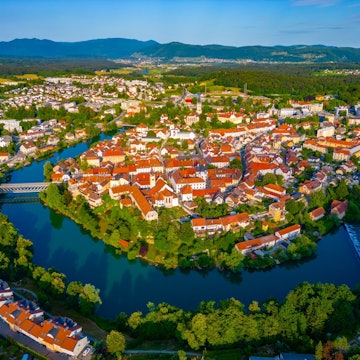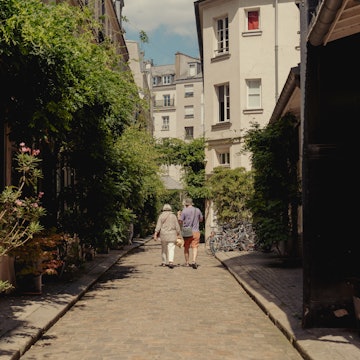

Augarten in Vienna. Zdravko Ciric/Shutterstock
Vienna is renowned as one of the greenest cities in the world, with an array of spectacular places to explore. Half of the Austrian capital is filled with green space, such as enchanting woods and vineyards. In fact, over a quarter of the city's 2000 parks are former imperial parks and gardens.
Enjoy Vienna's vibrant outdoor life with our guide to the city's most wonderful parks.

Prater
Beloved by generations of Viennese, the woodlands and meadows of the Prater sprawl between the Donaukanal (Danube Canal) and the Donau (Danube). This former river basin was once Habsburg monarchy hunting grounds, and it's now central Vienna's most popular park for walking, cycling and summertime picnicking.
Stately chestnut trees stand sentinel along the Hauptallee avenue, which leads to the Lusthaus, a 16th-century hunting lodge that was transformed for imperial festivities in the late 18th century and these days contains a cafe and restaurant serving Austrian classics in chandelier-lit splendor.
Kids' activities include the city's largest playground and quaint Liliputbahn miniature railway. The high point is the 65m-high (213ft) Riesenrad (Ferris wheel), built in 1897 to commemorate Emperor Franz Josef I's Golden Jubilee. Its distinctive red gondolas rotate above the Würstelprater amusement park's whirling rides and fun fair attractions.
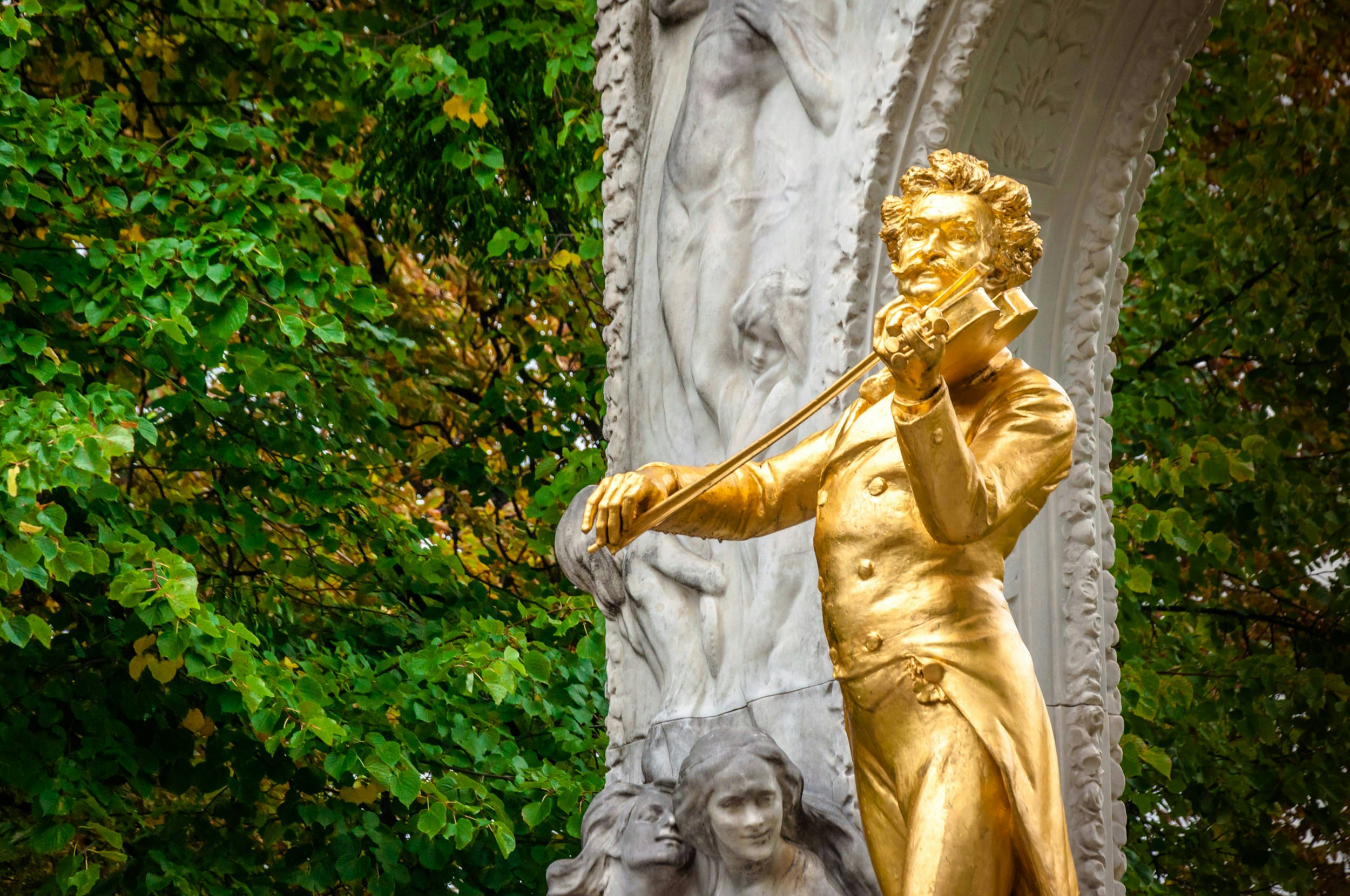
Stadtpark
On sunny days, city workers make a beeline for the peaceful Stadtpark (City Park). Straddling the Wien River, its paths wind past duck ponds shaded by willow trees.
Statues stud the park, including a shimmering gold monument of Johann Strauss the Younger (composer of the waltzes The Blue Danube and Tales From the Vienna Woods, among others) playing the violin. At the park's Renaissance Kursalon, evening concerts feature Mozart's and Strauss' stirring music.

Burggarten
Behind the splendid Hofburg palace complex, from where the Habsburgs ruled, is the verdant Burggarten (Castle Garden). A white marble statue of Mozart stands atop a pedestal, with reliefs depicting his childhood and work.
The Habsburgs' beautiful art nouveau greenhouses, dating from 1901, now contain the Schmetterlinghaus (Butterfly House), with hundreds of colorful winged creatures flitting amid tropical plants, and the Palmenhaus bar with a park-facing terrace.

Volksgarten
Like the nearby Burggarten, the Volksgarten (People's Park) was also part of the Hofburg. After fortifications here were destroyed by Napoleon, it became the city's first public park in 1823. It's a heady place to visit in late spring and summer, when its 3000 rose bushes with 400 different species are in fragrant bloom – and during a night of dancing at its Clubdiskothek, in a 19th-century glass pavilion.

Schloss Schönbrunn
The Habsburgs' sun-yellow summer palace is a must-visit for its sublime grounds alone. Schloss Schönbrunn took its name from the Schöner Brunnen fountain, which now pours through a nymph's stone pitcher near faux Roman ruins. Other follies include the Greek mythology–themed Neptunbrunnen, and an inviting hedge maze. Overlooking the palace and city skyline beyond is the arcaded triumphal-arch-style structure, the aptly-named Gloriette.
Within the Schlosspark (Palace Park) you'll also find the Palmenhaus (Palm House; a duplicate of the greenhouse in London’s Kew Gardens), Wüstenhaus (Desert House) and giant pandas, polar bears, elephants, giraffes and more at the 1752-established Schönbrunn Tiergarten – the world's oldest continually operating zoo.
Lainzer Tiergarten
Thickly wooded with beech and oak, Lainzer Tiergarten is the wildest of Vienna's city parks. Not a "zoo" in the conventional sense, here the Tiergarten refers to the free-roaming boar, deer and birdlife, including jackhammering woodpeckers in the expanse of this one-time imperial hunting ground. When snow falls, it's a magical spot for cross-country skiing far from the Christmas market crowds.

Schloss Belvedere
More imperial garden grandeur awaits at the Schloss Belvedere. Between the two Belvedere palaces, majestic three-tiered baroque gardens laid out in symmetrical formal French style are a vision of splashing fountains and immaculately manicured topiary.
In the Belvedere Schlossgarten, the Alpengarten (Alpine Garden) has a prized collection of Japanese bonsai and magnificent rhododendron displays. To the south, the rambling, English-style Schweizergarten (Swiss Garden) is home to the Belvedere 21 contemporary-art pavilion.
Botanischer Garten
Adjoining the Belvedere Schlossgarten to the west, Vienna's fascinating Botanischer Garten (Botanic Garden) took root as a pharmaceutical garden established by Empress Maria Theresa in the 18th century for the University of Vienna's medical faculty.
Now part of the university's Institute of Botany, it plays a vital role in research and conservation. Medicinal plants, rare orchids and succulents are among more than 12,000 species spanning six continents that grow in its greenhouses, groves and meadows.
Augarten
Vienna's oldest baroque garden is located within the 1775-established Augarten, a lovely place to laze an afternoon away. Palais Augarten, the former imperial pleasure palace here, now houses the early-18th-century-founded Augarten porcelain factory and museum. Contrasting the park's graceful tree-lined paths and flower beds are stark reminders of Vienna's WWII history in its two Flaktürme (flak towers).

Donauinsel and Alte Donau
When summer swings into action, locals head for the Donauinsel (Danube Island). Extending more than 21km (13 miles), the artificial island created as part of the city's flood protection system forms a separate arm of the river, the Neue Donau (New Danube). If you're seeking high-energy pursuits, you'll find swimming areas with fine-gravel beaches, a climbing park, a skate park and the world's biggest floating trampoline center.
More sailing, swimming and other water sports abound at the landlocked Alte Donau (Old Danube), split off from the Neue Donau by a splinter of land. Both are easily reached from the city center by U-Bahn (underground rail).
Wienerwald
Wrapping around Vienna's western edge, the Wienerwald (Vienna Woods) blankets over 1000 sq km (386 sq miles). The woods are laced with vineyards, charming Heurigen (rustic wine taverns) and a welter of mountain biking and hiking trails up into the hills.








